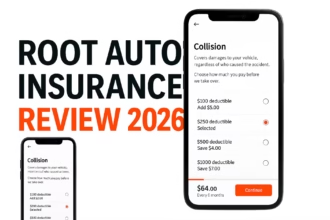Introduction
Cryptocurrencies have garnered significant attention due to their decentralized nature and innovative blockchain technology. At the heart of this technology lies the concept of block rewards, which play a crucial role in incentivizing participants and maintaining the integrity of the network. This comprehensive guide delves into the intricacies of block rewards, exploring their significance, components, calculation methods, and their impact on the cryptocurrency ecosystem.
What are Block Rewards?

Block rewards are the primary incentives offered to participants, known as miners or validators, for their contributions to the blockchain network. These rewards serve two primary purposes: compensating participants for their computational resources and introducing new cryptocurrency units into circulation.
In proof-of-work (PoW) blockchains, such as Bitcoin and Litecoin, miners compete to solve complex mathematical puzzles, and the first to find the solution is rewarded with newly minted coins. In proof-of-stake (PoS) systems, like Ethereum (after the merge) and Cardano, validators are selected based on the amount of cryptocurrency they have staked, and they receive rewards for validating transactions and creating new blocks.
READ ALSO: The Ultimate Guide to Altcoins: What They Are, Types, Pros and Cons, and the Future
The Significance of Block Rewards
Block rewards play a vital role in the decentralized nature of cryptocurrencies. By incentivizing participants to contribute their computational resources, block rewards ensure the security and integrity of the blockchain network. Without these incentives, participants would have little motivation to expend energy and resources on maintaining the network.
Moreover, block rewards symbolize the principle of decentralization by eliminating the need for a central authority to control or issue currency. Instead, the network itself generates and distributes new cryptocurrency units through a transparent and self-sustaining system, fostering trust and inclusivity.
Components of Block Rewards
Block rewards typically consist of two primary components: the mining or staking reward and transaction fees.
Mining or Staking Reward: The mining or staking reward is the predetermined amount of newly minted cryptocurrency units awarded to the participant who successfully validates a new block. This reward serves as the primary incentive for participants to contribute their computational resources to the network.
In PoW blockchains, the mining reward is granted to the miner who solves the complex mathematical puzzle first. In PoS blockchains, the staking reward is distributed among validators based on their stake and the consensus mechanism’s rules.
Transaction Fees: Transaction fees are the secondary component of block rewards. These fees are paid by users who initiate transactions on the blockchain to incentivize miners or validators to prioritize and include their transactions in the next block.
Transaction fees play a crucial role in ensuring the network’s efficiency and preventing spam or malicious transactions. By attaching a fee, users incentivize participants to prioritize their transactions, thereby maintaining the smooth operation of the blockchain.
READ ALSO: How to Buy Metaverse Crypto in 2024: A Comprehensive Guide
The Calculation of Block Rewards
Block rewards are typically calculated based on predefined algorithms and parameters specific to each blockchain. These calculations often involve fixed and variable components, halving events, and mining difficulty adjustments.
Fixed Block Rewards
Some cryptocurrencies, like Bitcoin and Litecoin, employ a fixed block reward system, where a predetermined amount of coins is awarded for each successfully validated block. This fixed reward is typically encoded into the blockchain’s protocol and remains constant until a predetermined event, such as a halving, occurs.
Variable Block Rewards
Other cryptocurrencies, like Ethereum (before the merge) and Monero, utilize variable block rewards. These rewards are calculated based on various factors, such as network participation, mining difficulty, or a combination of these factors. The variable nature of these rewards allows for dynamic adjustments to maintain a balanced incentive structure and control the overall cryptocurrency supply.
Halving Events
Many PoW blockchains, including Bitcoin and Litecoin, implement halving events, where the block reward is periodically reduced by half. These events are designed to control the overall supply of the cryptocurrency and mimic the scarcity of precious commodities like gold.
For example, Bitcoin’s block reward started at 50 BTC per block and has undergone three halving events, reducing the reward to the current 6.25 BTC per block. The next halving is scheduled to occur in April 2024, further reducing the block reward to 3.125 BTC per block.
Mining Difficulty Adjustments
Mining difficulty is another crucial factor that influences block rewards, particularly in PoW blockchains. The mining difficulty is adjusted periodically to maintain a consistent block generation time, typically around 10 minutes for Bitcoin.
As more miners join the network and the overall computational power (hash rate) increases, the mining difficulty rises to compensate for the increased competition. Conversely, if the hash rate decreases, the mining difficulty is reduced to maintain the desired block generation time.
These mining difficulty adjustments ensure that block rewards remain proportional to the computational resources expended by miners, maintaining a balanced incentive structure.
The Impact of Block Rewards on the Cryptocurrency Ecosystem
Block rewards have a profound impact on various aspects of the cryptocurrency ecosystem, including market dynamics, miner incentives, and environmental concerns.
Market Dynamics
Block rewards play a significant role in influencing the supply and demand dynamics of cryptocurrencies. The introduction of new cryptocurrency units through block rewards increases the overall supply, potentially affecting the token’s purchasing power and value.
However, many cryptocurrencies employ mechanisms such as halving events and fixed supply limits to counterbalance the increasing supply and maintain scarcity. These measures aim to preserve the cryptocurrency’s value and foster long-term adoption as a store of value or medium of exchange.
Miner Incentives
Block rewards serve as the primary incentive for miners to contribute their computational resources to the network. As block rewards decrease due to halving events or other supply-limiting mechanisms, miners may become more reliant on transaction fees to sustain their operations.
This shift in incentive structure can have implications for the network’s security and transaction processing efficiency. It may also lead to increased transaction fees, as miners prioritize transactions with higher fees to maximize their earnings.
Environmental Concerns
Proof-of-work blockchains, which rely on energy-intensive mining processes, have faced scrutiny due to their environmental impact. The computational resources required for mining consume significant amounts of energy, contributing to carbon emissions and a larger ecological footprint.
While some argue that the incentives provided by block rewards justify the energy consumption, others advocate for the adoption of more energy-efficient consensus mechanisms, such as proof-of-stake or hybrid approaches, to address these environmental concerns.
Innovations and the Future of Block Rewards
The cryptocurrency landscape is constantly evolving, with ongoing innovations that could potentially impact the role and significance of block rewards.
Scalability Solutions
One area of innovation focuses on scalability solutions, such as Layer 2 protocols like the Lightning Network for Bitcoin or sharding techniques for Ethereum. These solutions aim to increase transaction throughput and reduce network congestion, potentially decreasing the reliance on block rewards as the primary incentive for participation.
Alternative Consensus Mechanisms
Additionally, alternative consensus mechanisms like proof-of-stake (PoS) and delegated proof-of-stake (DPoS) are gaining traction. These mechanisms eliminate the need for energy-intensive mining processes and rely on validators staking their cryptocurrency holdings to secure the network.
In PoS and DPoS systems, block rewards are replaced by staking rewards, which are distributed to validators based on their stake and the consensus mechanism’s rules. This shift could potentially address some of the environmental concerns associated with mining while maintaining a robust incentive structure.
Decentralized Finance (DeFi)
The emergence of decentralized finance (DeFi) applications built on blockchain networks has introduced new incentive models and revenue streams. DeFi protocols often incorporate incentive mechanisms, such as liquidity mining or yield farming, where participants are rewarded with governance tokens or a share of transaction fees for providing liquidity or performing specific actions.
These incentives could potentially complement or even supplant traditional block rewards, fostering a more diverse and sustainable incentive ecosystem within the blockchain and cryptocurrency space.
READ ALSO: How to Pay With Cryptocurrency: From Wallets to Gift Cards
FAQ
What is the difference between block rewards and transaction fees?
Block rewards are the newly minted cryptocurrency units awarded to miners or validators for validating and adding new blocks to the blockchain. Transaction fees, on the other hand, are paid by users who initiate transactions to incentivize miners or validators to prioritize and include their transactions in the next block.
How are block rewards calculated?
Block rewards are calculated based on predefined algorithms and parameters specific to each blockchain. These calculations often involve fixed or variable components, halving events, and mining difficulty adjustments. The exact calculation method varies depending on the blockchain’s consensus mechanism and design.
What happens when all coins in a cryptocurrency’s supply have been mined?
Once all coins in a cryptocurrency’s supply have been mined, no new coins will be introduced through block rewards. In this scenario, miners or validators will solely rely on transaction fees as their incentive for maintaining the network. This transition may lead to increased transaction fees as miners prioritize transactions with higher fees to maximize their earnings.
How do block rewards contribute to the decentralization of cryptocurrencies?
Block rewards play a crucial role in maintaining the decentralized nature of cryptocurrencies.





